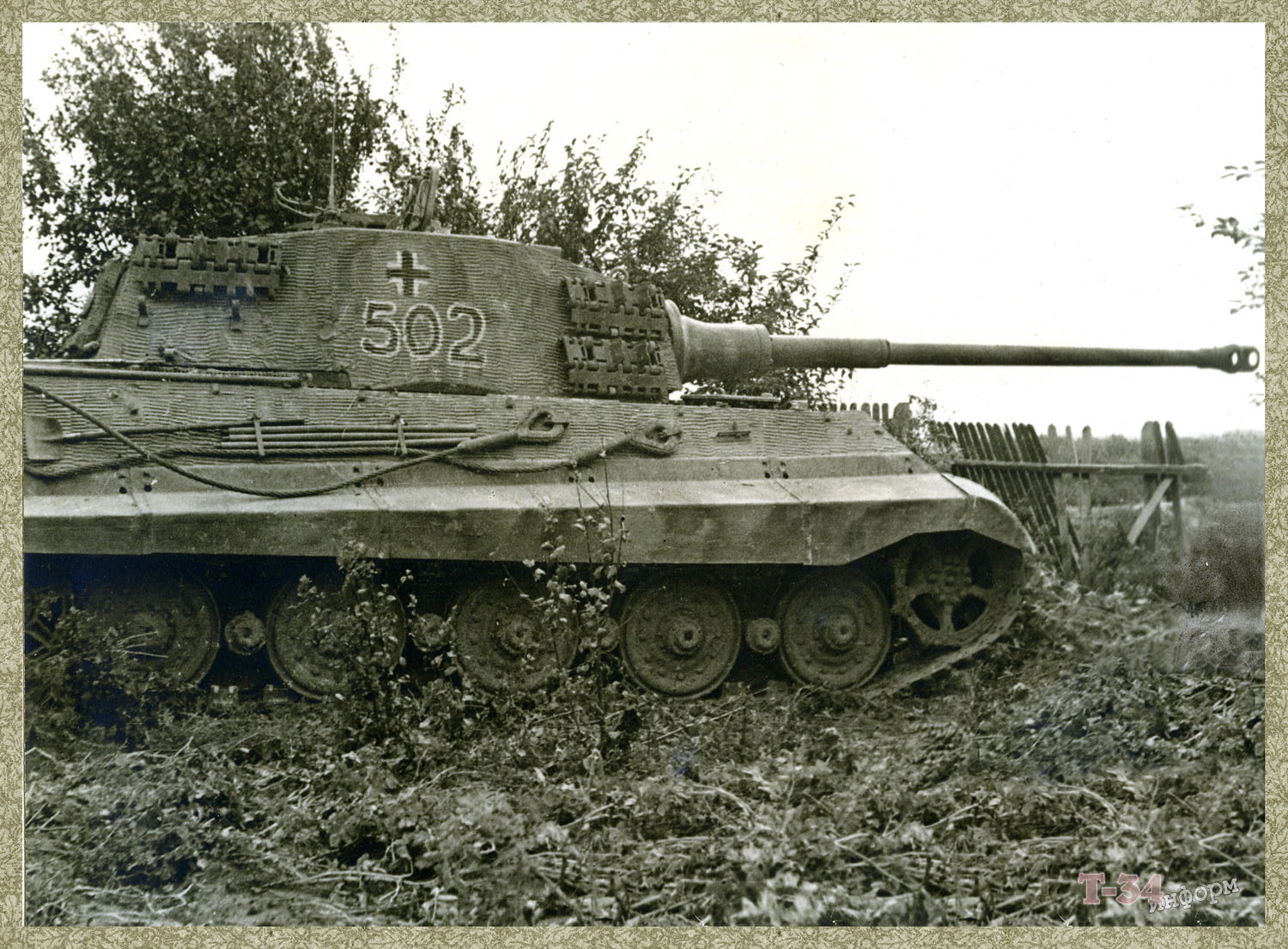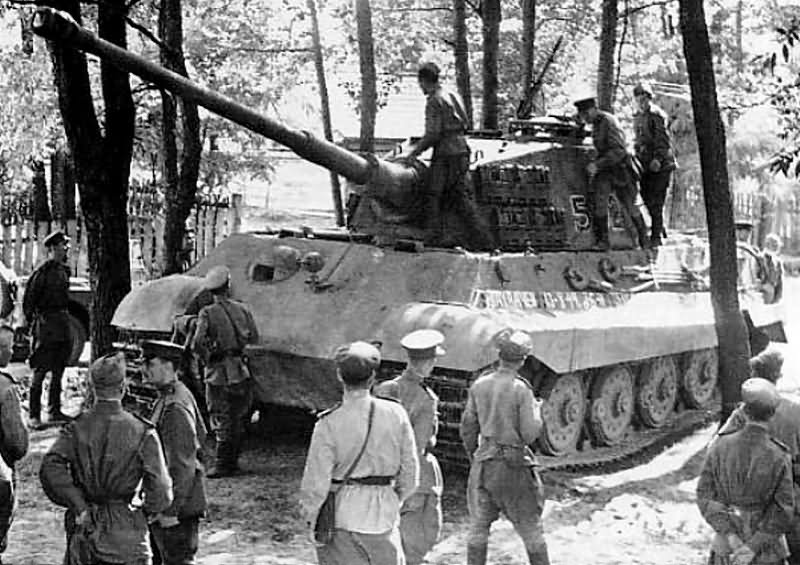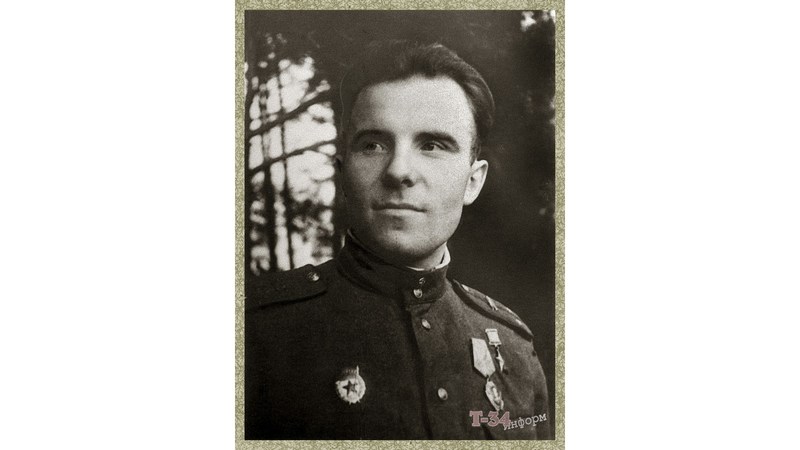The Battle of Oglendow – The first known use of heavy German tanks in the battle of the King Tiger
August 12, 1944 in the vicinity of the village of Oglendow the crew of T-34-85 A.P. Oskin destroyed three newest German tanks “King Tiger”.
The outcome of the battle was important for the capture of the Sandomierz bridgehead, which in turn played a decisive role in the subsequent successful development of the Vistula-Oder operation and the end of the war.
On August 12, 1944, the crew of the T-34-85 tank from the 53rd Guards Tank Brigade under the command of Guards Second Lieutenant Alexander Petrovich Oskin, acting as part of a tank group on the Sandomierz bridgehead, on the outskirts of the village of Oglendow (Stashowsky powiat, Sventokrzyskie Voivodeship, Poland ), repelled the attack of superior enemy forces consisting of 11 (according to other sources 15) tanks.
In battle, the crew of T-34-85 A.P. Oskin (driver Alexander Andreevich Stetsenko, gun commander Abubakir Yusupovich Merkhaidarov, gunner-radio operator Alexander Ivanovich Grudinin and loader Alexei Potapovich Khalchev) destroyed three newest of the German tank “Royal Tiger” (T-VIB “Tiger-II”) of the 501st heavy tank battalion, and one tank was damaged (according to other sources, only one lead tank was destroyed by the crew of A.P. Oskin, and the other two literally riddled with the main forces of the brigade and parts of the reinforcement ). This was the first combat use of the German Tiger II heavy tanks on the Eastern Front., which ended in complete failure for the German tankers who lost 24 tanks in this battle. The next day, August 13, 1944, Oskin’s tank was one of the first to burst into the village of Oglendow and destroyed dozens of enemy soldiers.
During this battle, three “Royal Tiger” tanks were captured in good condition, which were sent to Kubinka at the NIBT Polygon for study. Machine number 502 can now be seen in the armored museum in Kubinka.
One of the most memorable tank engagements of the war occurred towards the end of the Lvov-Sandomierz offensive in Poland. On the evening of 11 August 1944, Lt. Aleksandr P. Oskin of the 53rd Guards Fastov Tank Brigade (6th Guards Tank Corps) was ordered to patrol the Polish village of Ogledow where he was expected to link up with the unit’s 2nd Battalion. The patrol included a team of tank infantry which had been riding on his vehicle through the Belorussian and Polish fighting since June. On reaching the village, no friendly tanks were located, and German troops were approaching the opposite end of the town. Oskin informed the brigade commander and was told to take up a defensive position and monitor the German troops. The tank hull was already well camouflaged in a field of corn, and Oskin’s crew and the tank infantry camouflaged the turret with corn stalks. A German tank column entered Ogledow that evening and shot it up, but halted after dark.
Although Oskin did not know it at the time, the tank unit was a platoon from sPzAbt 501, the first German tank unit on the Eastern Front with Hitler’s latest ‘wonder weapon’, the new King Tiger heavy tank. The unit had disembarked earlier at Kielce with 45 King Tigers but by the time it had reached the vicinity of Ogledow on the evening of 11 August 1944, it was down to only eight tanks. The rest had broken down during the 45 km road march, mainly due to reduction gear failures.
 On August 12th, the King Tiger battalion was instructed to take action against the Soviet bridgehead over the Vistula River near Sandomierz. Oskin, sitting in his tank, witnessed the King Tigers leaving the village. They looked like Panthers, but Oskin remembered an intelligence briefing warning them about a new German heavy tank. Unnoticed by the Germans, Oskin’s well-camouflaged tank was positioned where the King Tigers would expose their vulnerable sides while moving down the road. Oskin ordered his loader to load a precious BR-365P hypervelocity round and waited until the King Tigers were 200 meters away and broadside. He then ordered his gunner to fire, hitting the turret side of the second tank. Although the impact killed some of the crew, it was not immediately apparent to Oskin’s crew. Frustrated, Oskin ordered more rounds to be fired at the turret, and eventually, the King Tiger started to burn.
On August 12th, the King Tiger battalion was instructed to take action against the Soviet bridgehead over the Vistula River near Sandomierz. Oskin, sitting in his tank, witnessed the King Tigers leaving the village. They looked like Panthers, but Oskin remembered an intelligence briefing warning them about a new German heavy tank. Unnoticed by the Germans, Oskin’s well-camouflaged tank was positioned where the King Tigers would expose their vulnerable sides while moving down the road. Oskin ordered his loader to load a precious BR-365P hypervelocity round and waited until the King Tigers were 200 meters away and broadside. He then ordered his gunner to fire, hitting the turret side of the second tank. Although the impact killed some of the crew, it was not immediately apparent to Oskin’s crew. Frustrated, Oskin ordered more rounds to be fired at the turret, and eventually, the King Tiger started to burn.
As the lead King Tiger swung its turret looking for Oskin’s tank, it could not locate the source of the attack due to the dust raised by the impacts of the 85 mm gun. Oskin fired three rounds at the front of the turret, which bounced off without any effect. However, the fourth round penetrated the turret ring, causing an ammunition fire, and the lead King Tiger began to burn. The third King Tiger, blinded by the smoke from the fuel fire on the second King Tiger, began to move backward at high speed. Oskin activated the smoke cans at the back of his tank for cover and pursued the third King Tiger. Eventually, Oskin managed to manoeuvre around the King Tiger and knocked it out with a shot into the engine compartment through the thin rear armour. Returning to the road, one of the King Tigers had stopped burning, so Oskin fired at it again with his last round of hypervelocity ammunition. Two of the King Tigers subsequently suffered catastrophic ammunition fires, which blew off their turrets. German losses were significant, with eleven of the fifteen crew members dead, including Lt. Karnetzki and Wieman, and some of the survivors taken prisoner by Oskin’s tank riders. The Tiger battalion was unaware of what had happened, and their losses were attributed to ‘massive anti-tank defences.’
The third King Tiger was later recovered and taken to the Red Army tank proving ground at Kubinka, where it still resides in the armoured force museum. Oskin was awarded the highest Red Army decoration, the Hero of the Soviet Union gold star.
Awards
By the Decree of the Presidium of the Supreme Soviet of the USSR of September 23, 1944, for the courage and heroism shown in battles, Guards Junior Lieutenant Alexander Petrovich Oskin was awarded the title of Hero of the Soviet Union with the Order of Lenin and the Gold Star medal.
The gun commander of the guard, senior sergeant Abubakir Yusupovich Merkhaydarov, was awarded the Order of the Red Banner. The rest of the crew received the Order of the Patriotic War II degree: driver Stetsenko, gunner-radio operator Grudinin, and loader Khalchev.
















